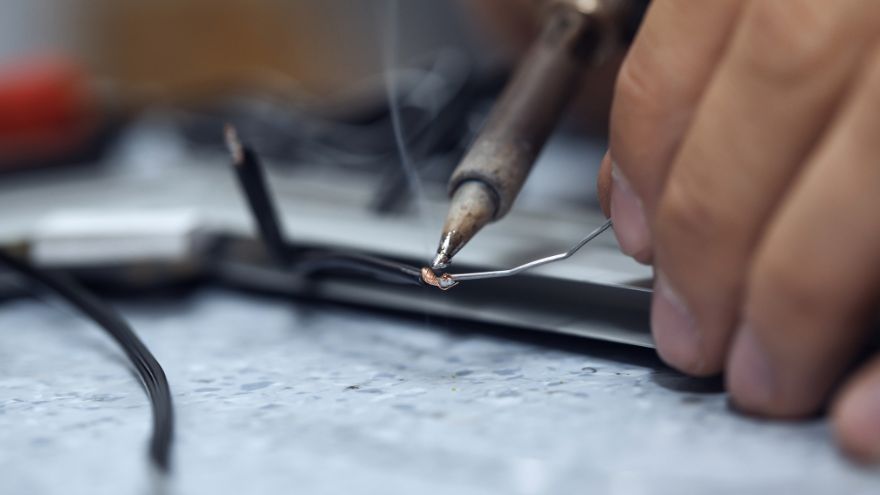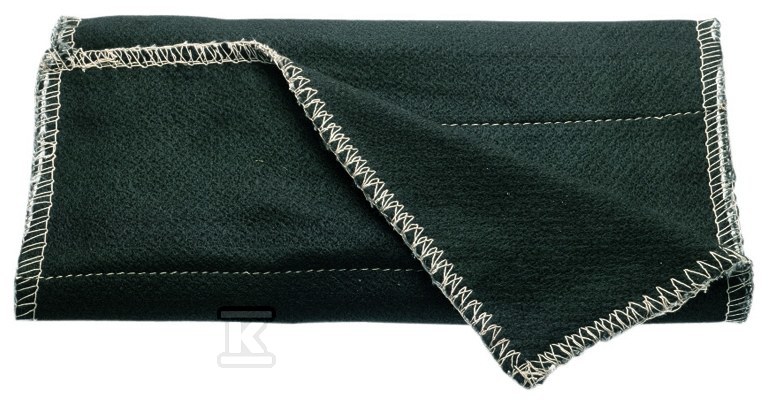As an expert in your field, you want to expand your skills and solder at an increasingly higher level every day. The art of soldering, or permanently connecting metal elements, is a real treat for every master. What to do to become a master in your company from an amateur? Learn a few useful tips that will make your soldering even more precise and thorough every day, and you will gain a multitude of satisfied customers.

Check out the soldering irons at the Onninen wholesaler
How to properly prepare an electrical wire for soldering?
Soldering is possible using a soldering iron and solder. In soldering, you do not use physical force, you have a soldering iron to connect two metal elements together. Remember that before soldering, you must first properly protect the wires. Start the preparation by cleaning the cables of all dirt, and also remove the insulation from the ends of the wires.
![Rothenberger 175W transformer soldering iron + accessories [EXPERT] MN-99-206](https://onninen.pl/lib/images/3817295.jpg) In the next step, the cables are heated using a soldering iron and solder is applied. The solder must be heated to a liquid state, but the elements that you are soldering do not change their state of matter. The solder is a tin alloy that allows for a permanent connection of the wire. Although it is commonly said that the solder is primarily tin, it also consists of a large amount of lead or copper.
In the next step, the cables are heated using a soldering iron and solder is applied. The solder must be heated to a liquid state, but the elements that you are soldering do not change their state of matter. The solder is a tin alloy that allows for a permanent connection of the wire. Although it is commonly said that the solder is primarily tin, it also consists of a large amount of lead or copper.
Another important aspect that you need to pay attention to is the melting temperature of the filler metal, which should be lower than the temperature of the soldered elements. During soft soldering, the temperature is lower than +450 degrees, while during hard soldering, the filler metal should be melted to a temperature above +450 degrees.
What else is necessary for soldering?
In the soldering process, the essential elements are mainly soldering irons and solders . There are several types of soldering irons available on the market. Their use depends on your individual needs. Below you will find a brief introduction to gas soldering irons and transformer soldering irons.
 Gas soldering iron – used to connect soft metal materials and thin wires, using tin. A gas soldering iron is very well suited for smaller and harder to reach places. It is a precision device, so connecting with it will complete the whole of your work. What's more, because it does not require using an electrical power source, you can work with this soldering iron practically anywhere – from a construction site to a workshop, and even more remote areas.
Gas soldering iron – used to connect soft metal materials and thin wires, using tin. A gas soldering iron is very well suited for smaller and harder to reach places. It is a precision device, so connecting with it will complete the whole of your work. What's more, because it does not require using an electrical power source, you can work with this soldering iron practically anywhere – from a construction site to a workshop, and even more remote areas.
However, a transformer soldering iron will work best if you have a thicker wire to connect or larger electronic components. Connecting with a transformer soldering iron requires access to an electrical power source.
How to properly secure soldered cables and wires?
 The last stage of your soldering work is to protect the soldered cables. In order for the connected cables and wires to be properly protected, you need to make a heat shrink sleeve. It is worth taking care of this in advance and having it placed on the wires below the soldered places before you start soldering. Once the electrical wires are connected and the solder has cooled, you should move the sleeve over the soldered cables.
The last stage of your soldering work is to protect the soldered cables. In order for the connected cables and wires to be properly protected, you need to make a heat shrink sleeve. It is worth taking care of this in advance and having it placed on the wires below the soldered places before you start soldering. Once the electrical wires are connected and the solder has cooled, you should move the sleeve over the soldered cables.
Soldering wires and soldering cables requires great precision, which must also be used when working with heat shrink tubing. The tubing shrinks under the influence of heat, so immediately after applying it to the soldered areas, heat it up, e.g. with a lighter flame. The heat will cause the tubing to shrink and properly protect the soldered wires.
What tools do we recommend for soldering?
- Rothenberger 175 W transformer soldering iron – its interesting advantage is the spot illumination of the soldered part. The set also includes: rosin, replaceable tips, case and tin.
- Protective soldering mat measuring 330x550 mm – a must-have for every DIY enthusiast. It will protect your surfaces from damage and dirt.
- YDY 2x1.5 750v installation cable – class 1 copper wire with different numbers of cores: 2, 3, 4, 5.
Precision and safety in soldering
Soldering electrical wires is an art that requires not only skills, but also an appropriate approach to safety. When soldering cables, it is crucial to pay attention to the melting temperature of the solder, which should be lower than the temperature of the elements being joined. To effectively solder electrical wires, remember to thoroughly clean the ends of electrical wires before starting work. A professional approach to soldering electrical wires guarantees not only aesthetic, but above all durable and safe connections, which are the foundation of every solid electrical installation.